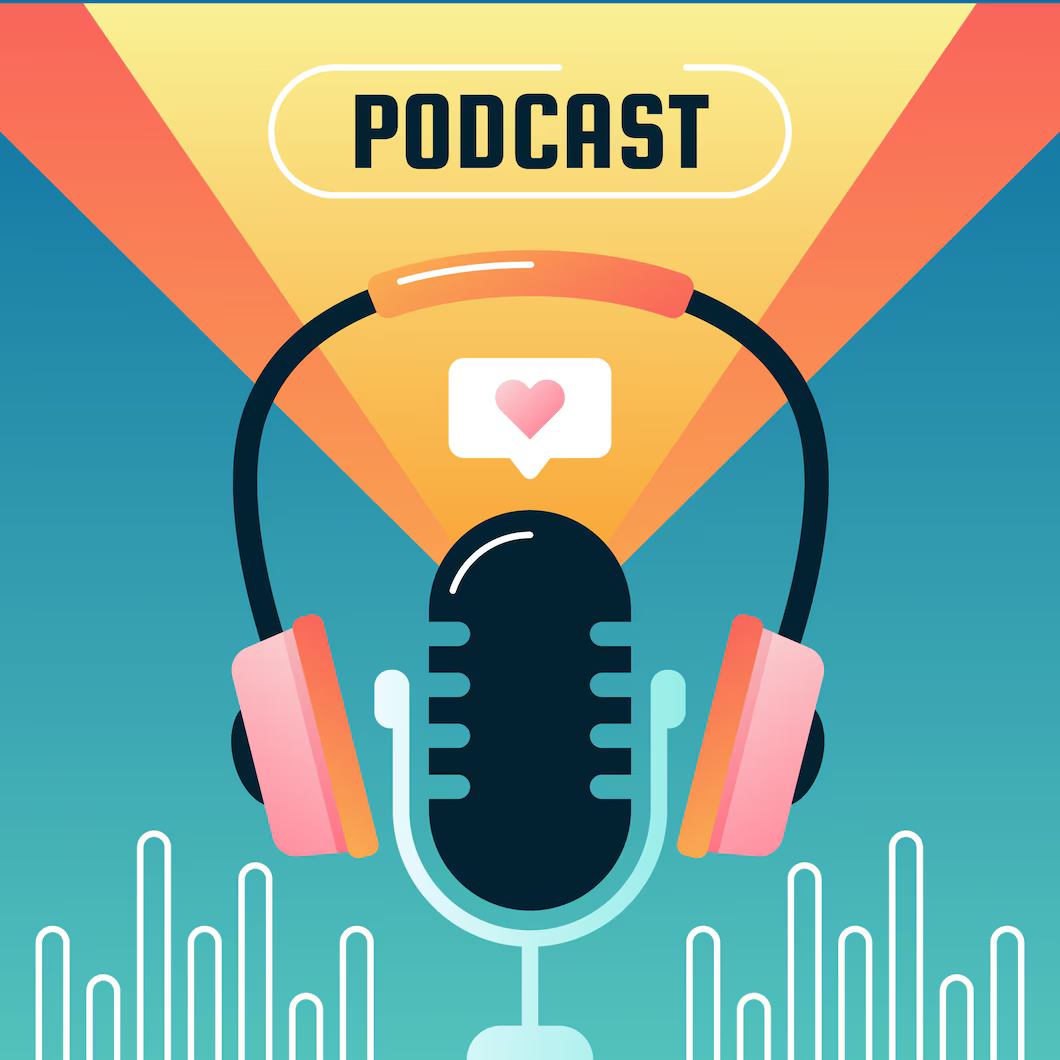If you’re new to the world of podcasts and you’re thinking about getting to know more about them because you have half a mind about starting one yourself then this is for you!
Here’s a brief definition of the 12 most basic words related to podcasting:
1.Niche: it’s a very narrowed-down topic that the podcast show has chosen to focus on. Eg.: a general theme could be “Startups”, a niche could be “Startups in Algeria”
2. Podcast episode: it’s one “unit” of the whole show, a podcast is made up of several podcast episodes. They each treat a very specific topic of the wider podcast topic (and often, niche). Eg.: “The impact of Technology on the Voiceover Industry” is a podcast episode of the podcast show “Hangout with APVA”
3. Podcast format: it’s how you present your content. You can choose to present it alone, with another person or have guests for interviews and debates. Most podcasts stick to one format for all of their episodes but it doesn’t have to be, and you can reinvent it according to what fits your needs. Some common podcast/podcast episode formats are: solo/monologue, co-hosted, one-on-one interview, panel interview, fictional and non-fictional storytelling
4. Co-host: you might know someone just as passionate as you are about your podcast topic and who would like to partner up with you on this. If you decide to present it together, the result would be a co-hosted podcast where both of you discuss the topic of the episode. Your partner would be your co-host.
5. Directory: it’s where your podcast is distributed to the public, i.e. where your audience can find, listen, and subscribe to your show. Some well-known directories are: Apple/iTunes, Google Podcast, Spotify
6. Cover art: is the image that comes right next to the podcast title and podcast episodes’ titles when browsing in the directory. It usually includes the name of the show and works as a visual identity for the podcast.
7. Podcast description: as the name suggests, it’s a description of the show, but a very very brief and concise one, it comes right next to the cover art and after the title of the show
8. Script: this especially concerns the solo and story-telling formats, where there isn’t interaction and discussion but not only. Basically, it’s the written format of what you’re going to say in your recording of the episode, but more broadly it serves as a roadmap, to guide you throughout the episode so the show runs more smoothly and remains engaging.
9. Intro: it comes at the beginning of every episode and it shouldn’t last more than a minute. It serves to present the podcast (name), title, and the number of the episode (these should always be mentioned). It can give a sneak-peak of what’s to be talked about or who’s going to contribute to the discussion if there are guests, but without giving too much away. It often has music in it, to give it a more unique touch.
10. Outro: it comes at the end of every episode and it’s where you wrap up the show. You can thank your audience and ask them to take action, like subscribing or following you on other platforms so they won’t miss the next episode. You can also put the same music used in the intro.
11. Media host: is where you upload the files of your podcast (audio files, and specifications like titles, description and cover art). Once uploaded it will generate an RSS feed to distribute your show to the various directories (the platforms where the audience will be able to see and listen to it)
12. RSS feed: or Really Simple Syndication, is the unique link (URL) given to you by the hosting site that you use to submit your podcast to the different directories. It gets automatically updated whenever you add a new episode or make any other changes.
By Malika A.



